There’s more than a few quadcopter and drone enthusiasts at Markforged, which is why we’re excited to share an internal application we’ve been building for the last month. We’re upgrading an IRIS+ quadcopter from 3DRobotics with carbon fibre-reinforced 3D printed components that are both lighter and stronger than the original parts, to see how high we can push the limits of performance. This isn’t the first time Markforged parts have helped a carbon fibre drone fly — the Snotbot research project used Kevlar-reinforced landing gear and one of our engineers printed a racing drone— but we’re excited about this project because this drone is large enough for the carbon fibre-reinforced parts to gain a significant strength advantage over pure plastics. We’re still working on the final design, but we’re going to document the build process with lots of pictures and lessons learned along the way, so expect to see a few more of these build logs in the coming weeks!
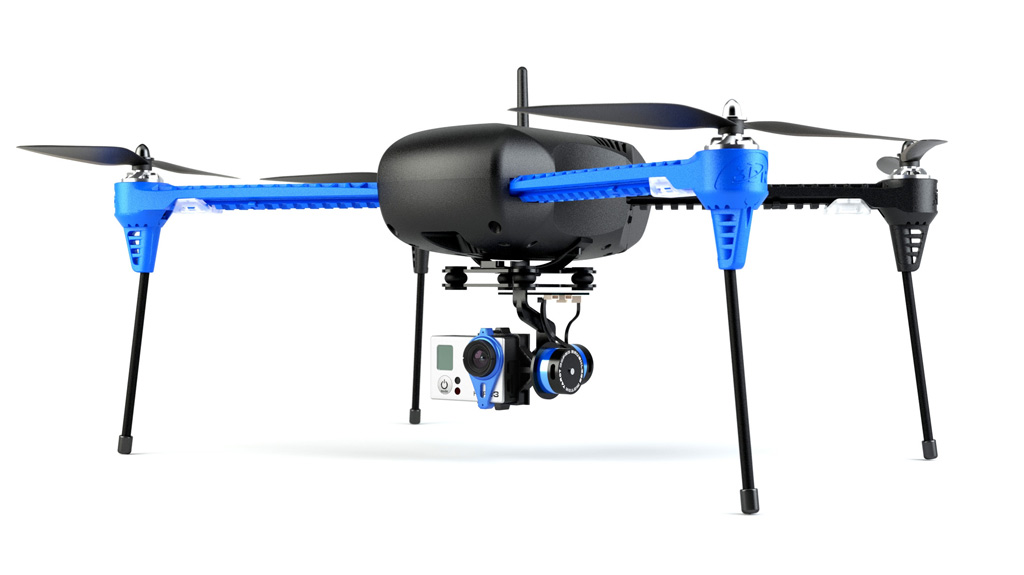
The stock 3DR IRIS+ platform with a 2-axis camera gimbal and landing gear extension accessories (source: DRNES.com)
A bit of back story — in early March 2016, 3DRobotics decided to release open-source STL files of their IRIS+ platform on MyMiniFactory.com (MMF), giving their blessing to anyone with a 3D printer to innovate on the platform. As you can see from by visiting the MMF link, this has led to a proliferation of accessories and performance upgrades in the last two months, including pontoon floats for water landings and mounts for First Person View (FPV) flying.
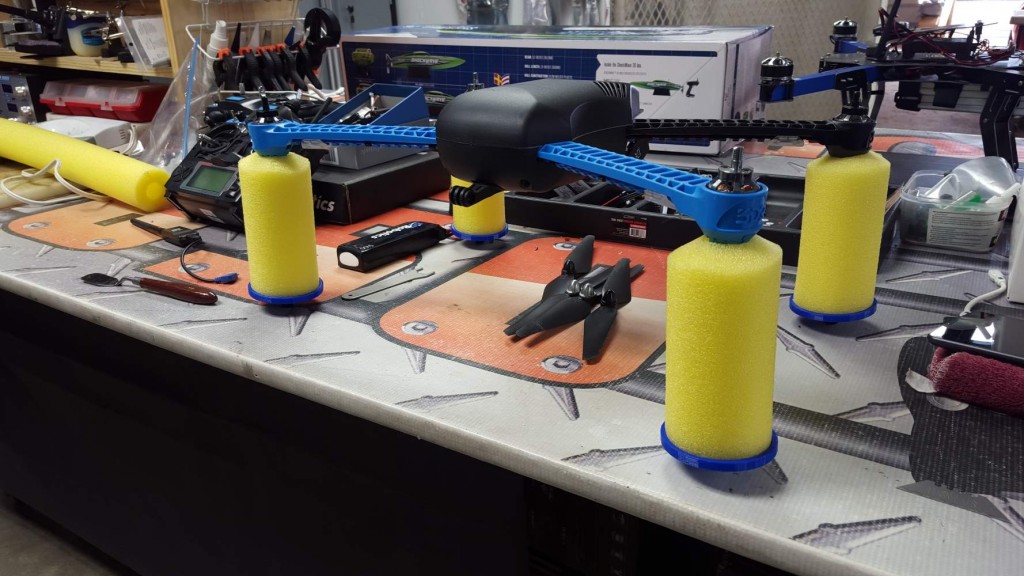
3D printed pontoon floats for watery landings (source: MyMiniFactory)
Around the same time as the IRIS+ announcement, we had been looking for a reliable drone platform with which to leverage high-strength carbon fibre 3D printing enabled by the Mark Two. These days, there are a plethora of phenomenal quadcopters on the market at affordable prices, but many models aren’t designed well for 3D printing. Many models use an injection moulded outer casing that also serves as the superstructure of the drone itself — DJI’s Phantom line is probably the best-known example of this. While this type of design has allowed drones to become extremely affordable — injection moulded parts are insanely cheap in large volumes — the shell-type structure requires a lot of support material to print (read: 3+ day print times) and it can’t take advantage of the sandwich panel constructionthat Markforged printers utilise to make parts with extremely high strength-to-weight ratios.

The DJI Phantom 4 is a great drone, but its injection-moulded outer shell isn’t ideal for upgrading with 3D printing (source: DJI)
The IRIS+ open source announcement could not have come at a more perfect time, and we’ve been busy test printing parts since. You may have read a sneak peek of the carbon fibre-reinforced drone arms in our previous posts on sandwich panel construction or adding threaded inserts to 3D printed parts on the Markforged blog. We’ve now printed prototypes of the arms, a design modified from the stock IRIS+ version by Kirby Downey.
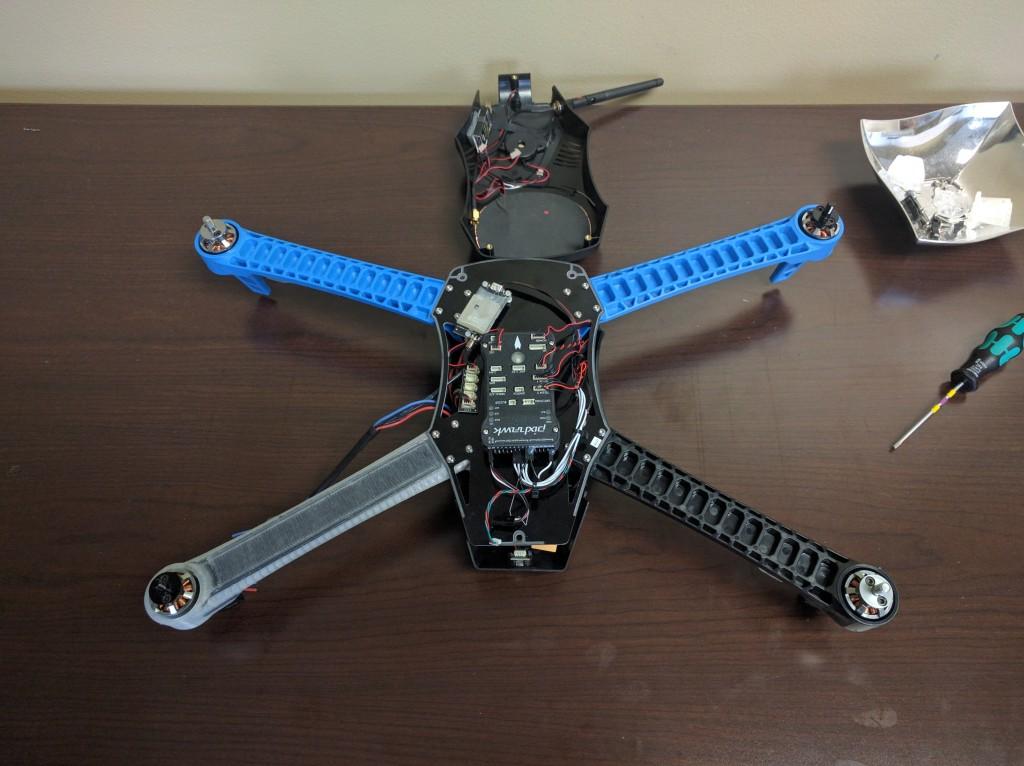
The prototype arm (bottom left) installed on the IRIS+ platform
We won’t know how the arms improve flight performance for a couple weeks, but we do have some initial data that suggests the changes will increase the maximum flight duration — a 15% reduction in weight versus the stock drone arm.
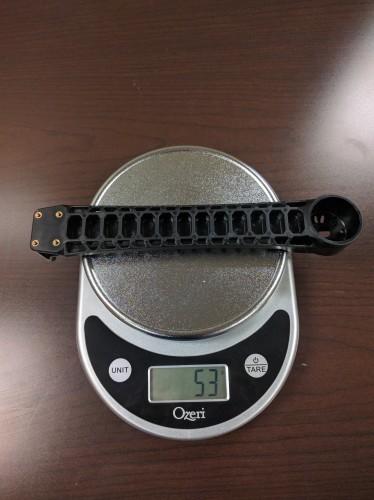
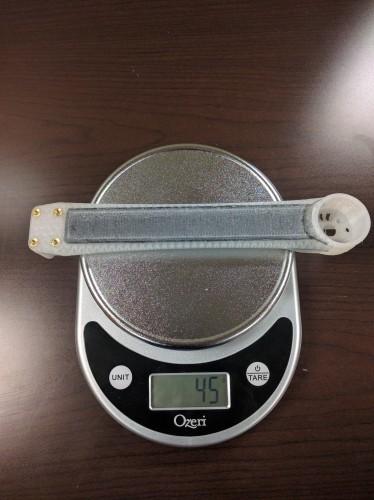
We’ve only scratched the surface of what we can do with the Markforged Mark Two and the IRIS+ platform — follow our build progress in the coming weeks and see what’s next!
Want to see what a Markforged printer can do for you? Request a demo today!

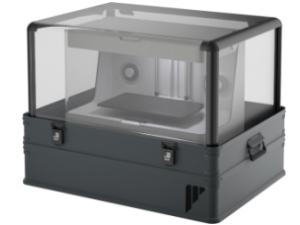
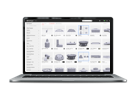
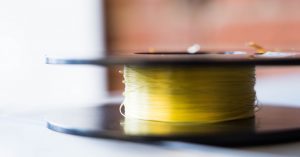
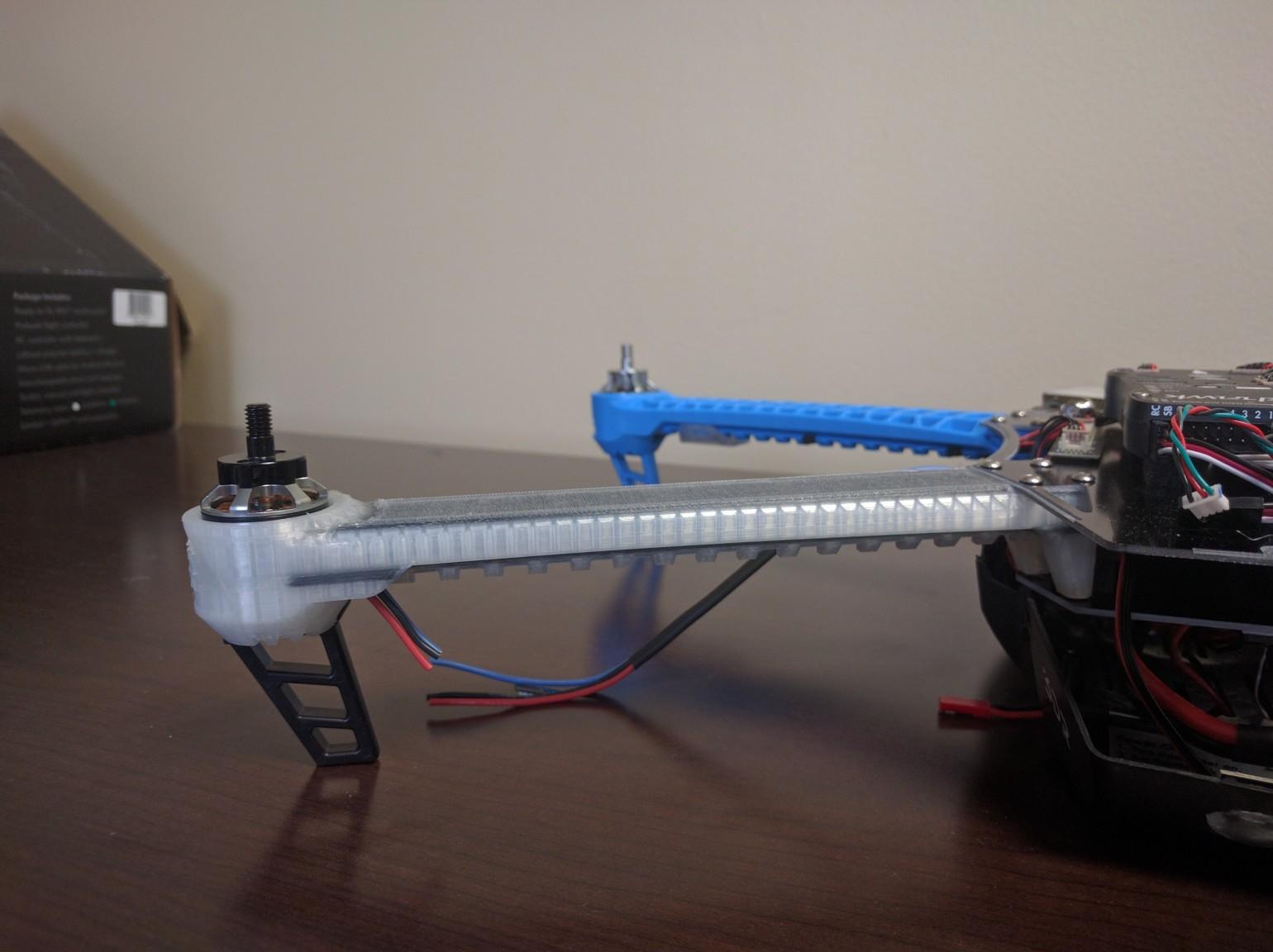
![Jet Dragster Racing [Video] with 3D Printed Parts](https://www.mark3d.com/en/wp-content/uploads/sites/6/2024/01/Josette-Roach-500x383.png)
![Hollywood Propmaster [Video] 3D Printing with Markforged](https://www.mark3d.com/en/wp-content/uploads/sites/6/2024/01/Thingergy-26-scaled-500x383.jpg)
![BattleBots Valkyrie [Video] Using 3D Printed Parts](https://www.mark3d.com/en/wp-content/uploads/sites/6/2024/01/BattleBots-11-500x383.png)
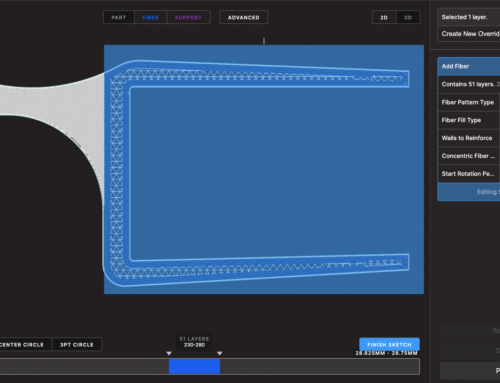
Leave A Comment